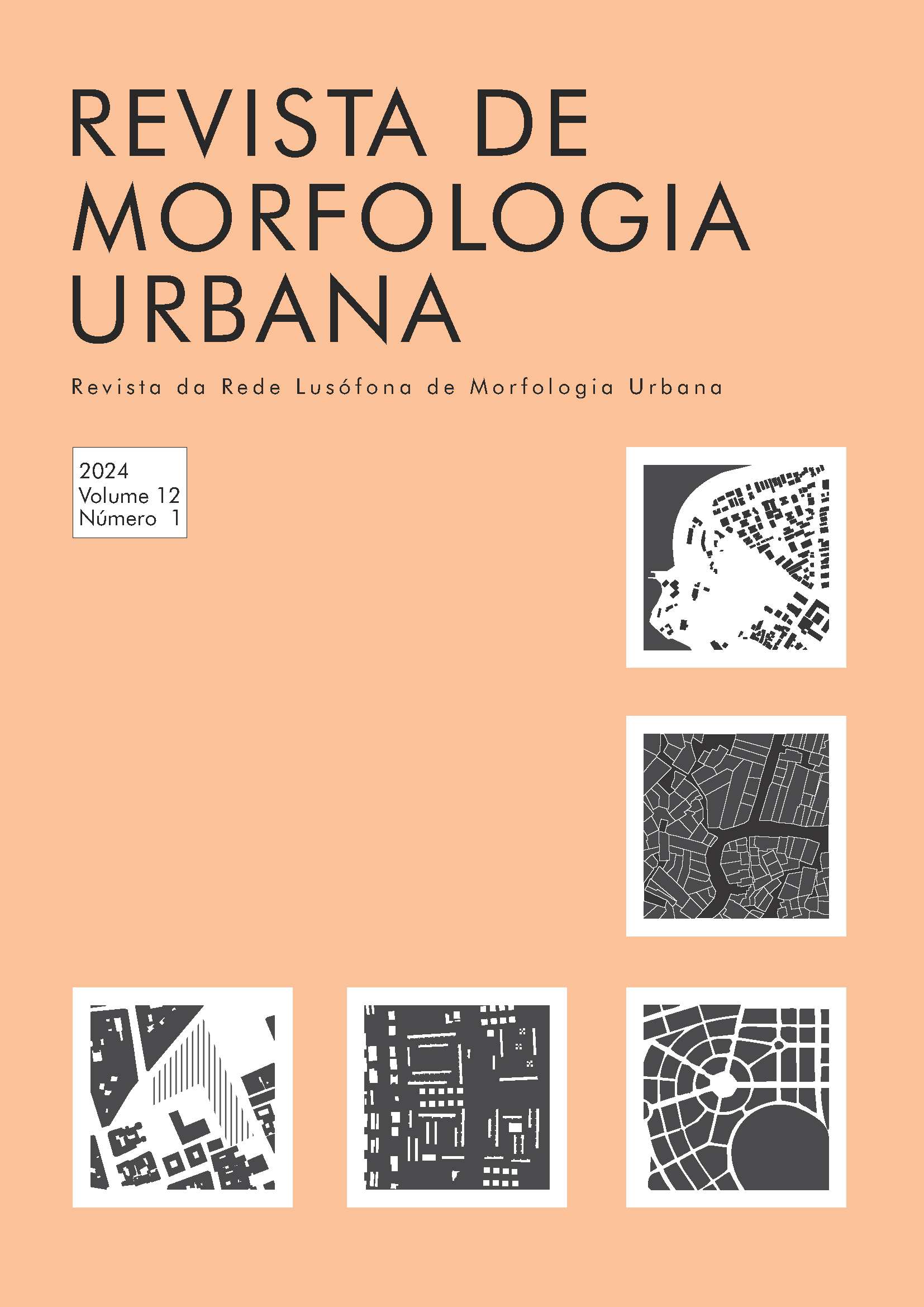Abstract
This article categorizes the morphological types of squares in Brasilia, Distrito Federal, analyzing their relationship with the surrounding fabric and the presence of furniture and vegetation. For ten typical cases of each category, it nuances the morphological analysis and investigates the patterns of social appropriation. The study is based on type-morphological analysis and environmental behavior to investigate this suis generis type of public space - the urban square. Based on the shpfile layers of road network, blocks/lots, land use and living and leisure furniture from Geoportal and Google Street View®, 2270 squares were mapped and typified. The results made it possible to identify different origins of the layout and intended functions of the square, taking into account the various morphological influences - modernist and contemporary - of Brasilia, as well as the decisive influence of the quality of the surrounding fabric - access, density, land use - and the design resolution and maintenance of the square - environments, furniture, vegetation - on patterns of social appropriation; showing the richness of public life not only to teach, by way of conclusions, attributes for good urban design, but also to reaffirm that it effectively makes up the soul of the city.
References
Aymonino, C. (1984) O significado das cidades (Editorial Presença, Lisboa).
Caldeira, J. M. (2007) A praça na cidade brasileira, trajetória de um espaço urbano: origem e modernidade. Tese de Doutorado, Departamento de História da Unicamp, Campinas.
Caniggia, G.; Maffei, G. L. (2001) Architectural composition and Building typology: interpreting basic Building (Alinea Editrice Firenze).
Cataldi, G.; Maffei, G. L.; Vaccaro, P. (1999) “Paolo Marreto’s contribution to the Muratori School”, Urban Morphology 3, 47-9.
FernandeS, S. A. (2006) Praça em Portugal. (SRMM, Lisboa).
Gauther, P. (2005) Conceptualizing the social construction of urban and architectural forms through the typological process. Urban Morphology 9(2), 83-93. DOI:10.51347/jum.v9i2.3921.
Gehl, J; Svarre, B. (2018) A vida na cidade: como estudar (Perspectiva, São Paulo).
GDF. (2023). Geoportal. Recuperado em 15 de agosto de 2023, de https://www.geoportal.seduh.df.gov.br/geoportal/.
Jacobs, J. (2007) Morte e vida de grandes cidades (Martins Fontes, São Paulo).
Holanda, F. (2003) “Brasília: da Carta de Atenas à cidade de muros”. V Seminário Nacional Docomomo Brasil, EESC USP. São Carlos.
Kohlsdorf, M. E. (1996) “Brasília, Mosaico Morfológico”. Anais do IV Seminário História da Cidade e do Urbanismo, vol.II. Rio: PROURB/FAU-UFRJ.
Lynch, K. (1997). Imagem da Cidade (Martins Fontes, São Paulo).
Maretto, M. “Saverio Muratori: towards a morphological school of urban design”. Urban Morphology (2013) 17(2), 93-106. DOI: https://doi.org/10.51347/jum.v17i2.3990.
Marx, M. (1991) Cidade no Brasil terra de quem? (Nobel, São Paulo).
Morris. A. E. J. (1972) History of urban form. Before the industrial revolution (George Godwin Limited, Londres).
Moudon, A.V. (1997). “Urban morphology as an emerging interdisciplinary field”, Urban Morphology, 1,3-10.
Oliveira, V. (2016) Urban Morphology: an introduction to the study of the physical form of cities (Springer, Lisboa).
Panerai, P, Castex, J., Depaule, J.C. (2004) Urban forms: the death and life of the urban block (Architectural Press, UK).
Rapoport, A. (1977) The meaning of the built environment: a nonverbal communication approach to form and design (Pergamon, Oxford).
Zucker, P. (1959) Town and Square (Columbia University Press, New York).

This work is licensed under a Creative Commons Attribution 4.0 International License.
Copyright (c) 2024 Patrícia Silva Gomes, Beatriz Versiani Ponce Lopes


